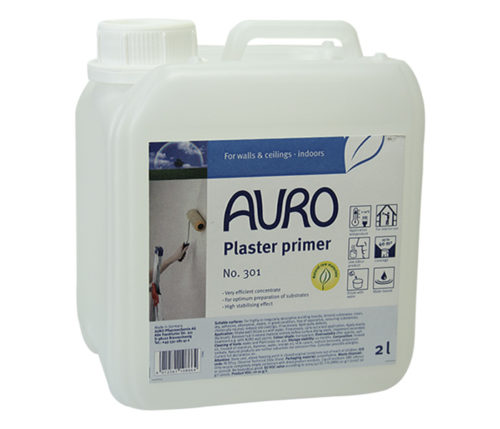Lime plaster is a natural, breathable substrate. It's vital to use a suitable paint for lime plaster however you generally don't need a primer before painting if you're using a natural breathable paint.
That said, you may need to use a primer in some situations to ensure an even finish. If a primer is needed, it should be compatible with the plaster. A mist coat may also be beneficial when using breathable paints on lime plaster.
Why Standard Primers Don't Work on Lime Plaster
Lime plaster is a breathable, flexible material. It allows moisture to evaporate naturally, which is one of the key reasons it's used in heritage and eco homes. Standard primers, especially those made with plastic resins or PVA, are designed to seal a surface.
This completely undermines the breathable nature of lime plaster and can cause:-
- Flaking and peeling paint.
- Trapped moisture causing damp and mould infestation.
- Degradation of the plaster over time.
Mist Coating Lime Plaster
If you're painting newly applied lime plaster, the substrate might benefit from a mist coat. This is simply your chosen breathable paint thinned with water. It acts as a bonding layer and allows the paint to penetrate the surface without blocking breathability.
To apply a mist coat you need to:-
- Use a breathable paint suitable for lime plaster, such as Graphenstone Grafclean or a natural lime paint.
- Thin the first coat by around 20% with water.
- Apply the mist coat and let it fully dry.
- Follow up with one or two full-strength coats.
Using a mist coat helps the paint soak in and bond with the surface, while maintaining the wall's breathability. Once the mist coat has dried, you can proceed with your top coats as normal.
This approach works for mineral paints, lime paints, and in some cases, clay paints.
When Might You Consider a Primer?
There are some cases where a specialist primer may be helpful. Particularly if surface repairs have been conducted with lime filler, and the surface is uneven.
For example:-
- If the lime plaster is very dusty, friable, or has needed surface repair in some areas.
- If specified by the manufacturer (always check the product's technical data sheet).
A specialist primer can help even out surfaces, creating a better finish for your paint. You should only use a breathable, mineral compatible primer paint that's suitable for lime based surfaces.
FAQs
Can I use PVA or acrylic primer on lime plaster?
No. These seal the surface and block breathability, leading to moisture problems.
What's the best primer for lime plaster?
In most cases, none is needed. Use a mist coat of your breathable topcoat paint.
Do I need a primer before using limewash?
No primer is required. However, surface preparation is important. Cleaning, removing dust, and dampening the surface can help limewash bond properly.
Avoid Plastic Based Primers
Remember, lime plaster is designed to work with breathable finishes. Avoid modern primers that can seal the surface, and instead use a thinned mist coat of your chosen paint if you're painting fresh plaster. This will help the paint bond effectively, allow moisture to escape, and keep your walls healthy over time.
Need help choosing the right paint? Contact us for personalised advice on your painting project.You can also order a free paint chart.
See Also: Can you use clay paint on lime plaster? | What is breathable paint?


